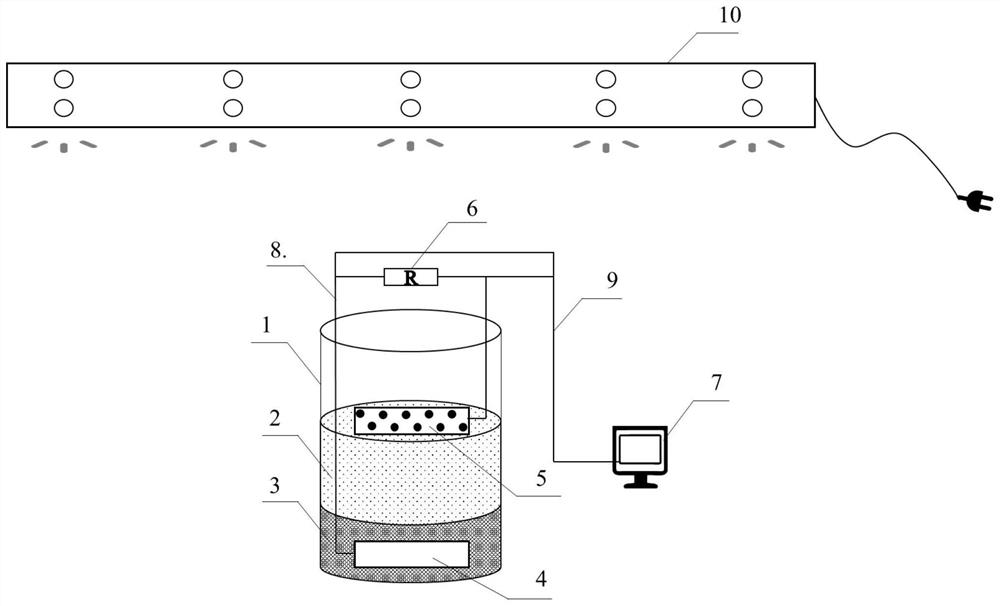Method for degrading red tide/water bloom algae by driving electro-Fenton in situ based on sedimentary microbial fuel cell of water body bottom mud
A fuel cell and microbial technology, applied in biological water/sewage treatment, water/sludge/sewage treatment, water/sewage treatment, etc., can solve water pollution and other problems, and achieve the effect of improving biodegradation efficiency
- Summary
- Abstract
- Description
- Claims
- Application Information
AI Technical Summary
Problems solved by technology
Method used
Image
Examples
Embodiment 1
[0015] Example 1: A method for in situ driving electro-Fenton to degrade red tide algae based on shallow seabed mud-based SMFC
[0016] figure 1 It is a schematic diagram of a reactor for in situ driving electric Fenton to degrade red tide algae based on shallow seabed mud SMFC of the present invention. The experimental device includes a reactor 1, an anode carbon felt 4 (80mm × 40mm × 5mm), a negative cathode carbon felt 5 (80mm × 40mm × 5mm) loaded with γ-FeOOH, a 1kΩ external resistance 6, an electrochemical workstation 7, 1m Long 50w full spectrum fluorescent lamp 10. The anode carbon felt 4 is fixed in the shallow seabed mud (2 cm from the bottom of the beaker) and is connected to the cathode carbon felt 5 fixed on the upper surface of the water body with the cathode load γ-FeOOH through a titanium wire 8 and an external resistance 6 . The electrochemical workstation 7 is connected in the circuit by the copper wire 9 to monitor the electricity production trend of the SM...
PUM
 Login to View More
Login to View More Abstract
Description
Claims
Application Information
 Login to View More
Login to View More - R&D
- Intellectual Property
- Life Sciences
- Materials
- Tech Scout
- Unparalleled Data Quality
- Higher Quality Content
- 60% Fewer Hallucinations
Browse by: Latest US Patents, China's latest patents, Technical Efficacy Thesaurus, Application Domain, Technology Topic, Popular Technical Reports.
© 2025 PatSnap. All rights reserved.Legal|Privacy policy|Modern Slavery Act Transparency Statement|Sitemap|About US| Contact US: help@patsnap.com

